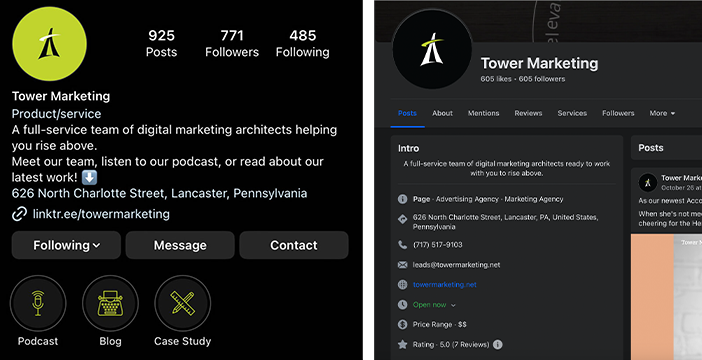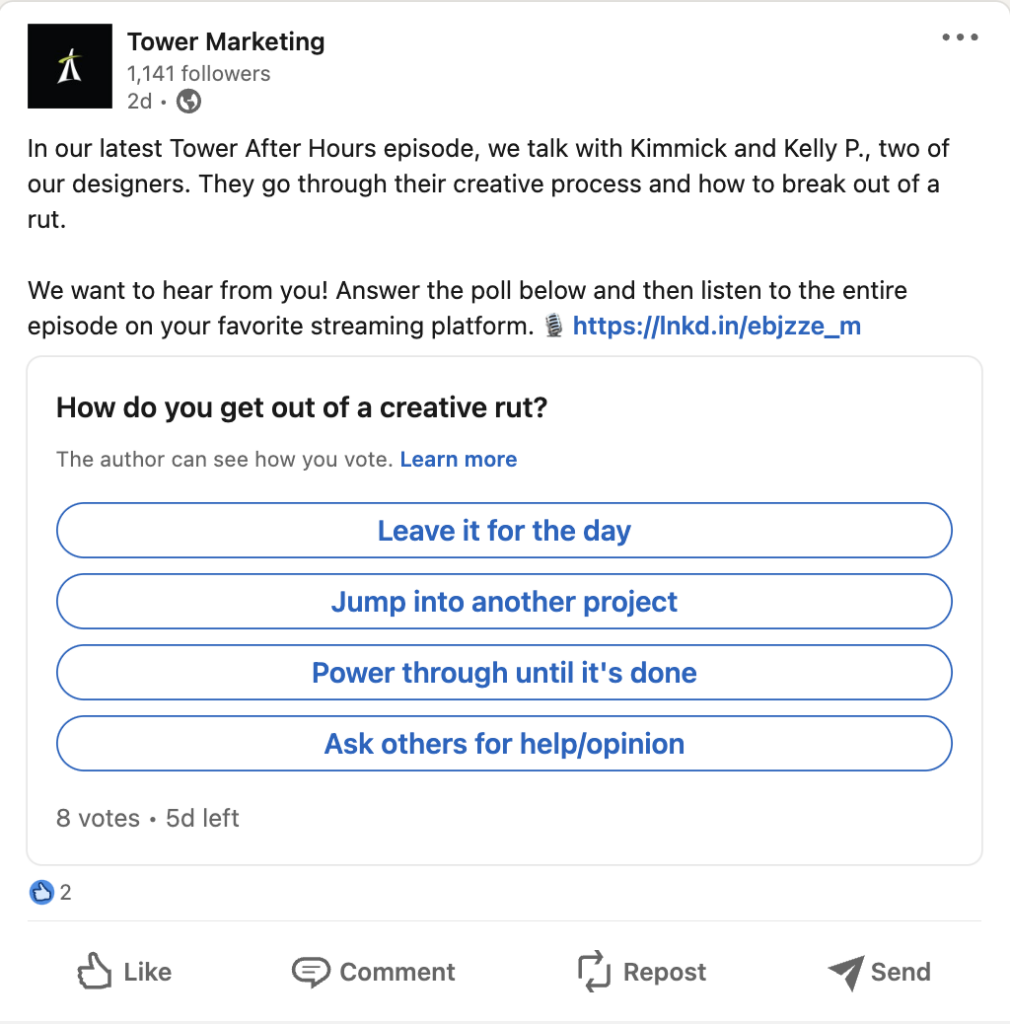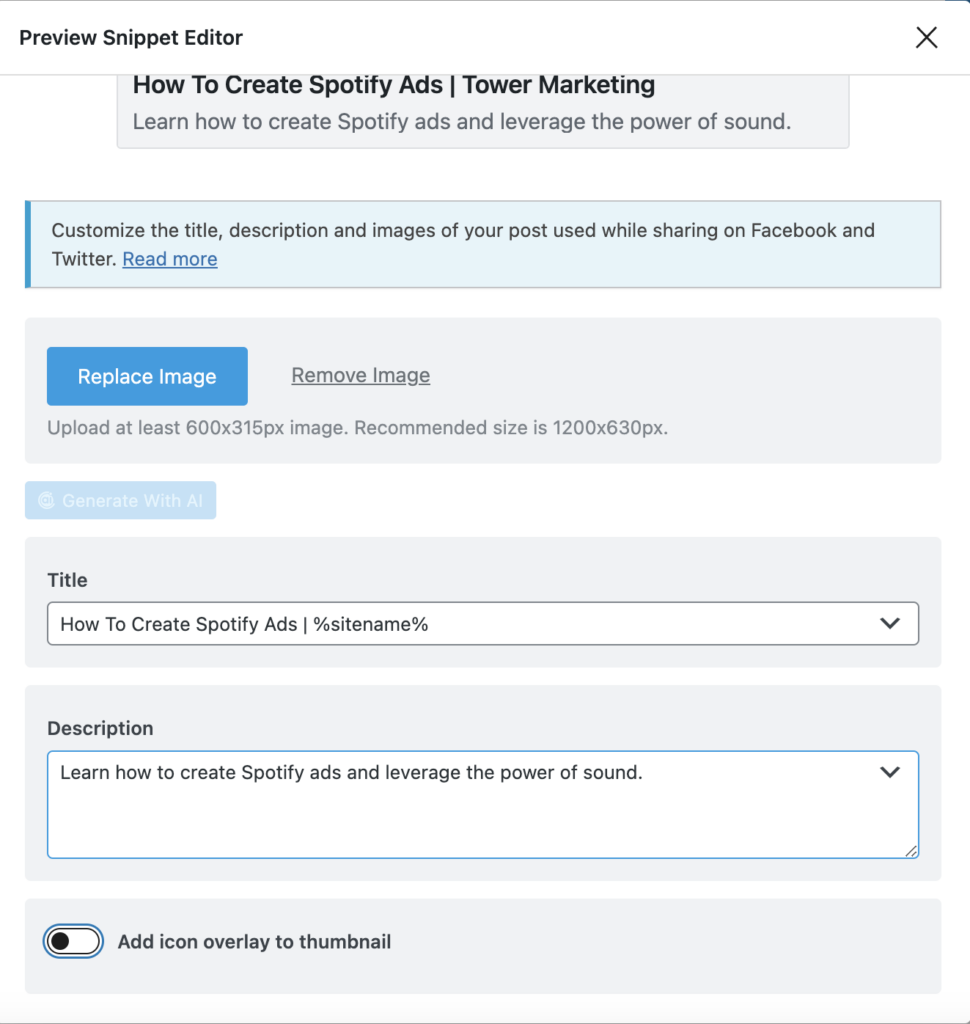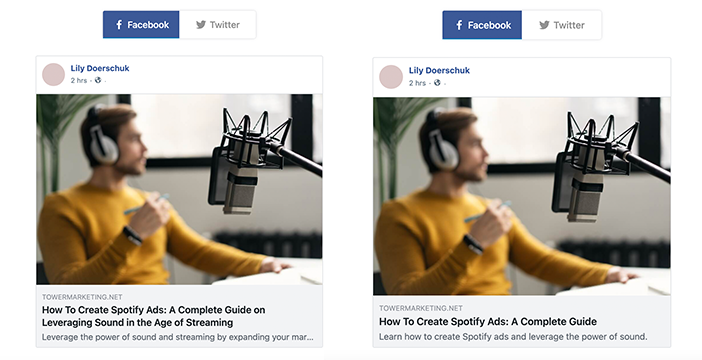The average person spends 152 minutes on social media daily. That’s 2 hours and 32 minutes of consuming content on any given day.
And if your business is lacking an effective social media optimization strategy, that’s over two and a half hours you could be missing out on to nurture customer relationships.
Social media optimization (SMO) — not to be confused with search engine optimization (SEO) — is essential to your business’s organic social media strategy. If your account isn’t designed to be discoverable and shareable, the odds of new users finding your account are left merely to chance.
Luckily, there are some fool-proof steps that you can take to boost those odds. Unlock the secrets to expanding your messaging, strengthening your credibility, and nurturing customer relationships through SMO.
What is Social Media Optimization (SMO)?
You’ve heard of word-of-mouth advertising. When it’s done right, it can be an extremely powerful and free marketing tool. Think of SMO as the digital version of word-of-mouth advertising.
Put simply, SMO is the process of refining your organic social media accounts to increase your brand’s reach and visibility across various platforms.
It goes beyond the basics of simply existing on a social platform. It’s deeply understanding your target audience and crafting valuable content for them to engage with and share on the platforms they are most likely to be on.
To help better explain the concept, let’s clarify what SMO is not.
SMO vs. SEO
Though SEO and SMO have similar intentions, they are two different marketing tools. SEO is the strategic process of maintaining site health through technical improvements and writing content to boost website visibility in search engine result pages (SERPs).
In the same way that SEO keywords help users find your site in the SERPs, SMO helps users find and engage with your business on social media.
They are both long-term strategies intended to drive traffic organically to their respective channels.
SMO vs. SMM
Unlike SMO or SEO, social media marketing (SMM) is usually a paid social media effort with a pointed objective. The goal of SMM is to drive web traffic, generate leads, or raise brand awareness to a targeted audience through paid social marketing channels.
You’ve probably seen SMM hard at work on your own social media feeds. Because businesses are paying to reach their desired audience, SMM is almost impossible to avoid. You’ll know it’s a paid effort because it’s labeled as “sponsored content”.
SMO on the other hand, will always be discovered organically because it’s a free marketing strategy.
8 Benefits of SMO
Optimizing your social media accounts can benefit your business in many ways. Aside from boosting your brand awareness, SMO can help your business:
- Reveal a personal side by participating in online conversations with your audience.
- Acquire intelligence by listening to customers and observing competitors.
- Establish trust and credibility by solidifying your online reputation.
- Increase the influence, shareability, and linkability of your content— a great way to work in tandem with SEO!
- Establish your business as a trustworthy, authoritative resource.
- Identify valuable users who can act as potential brand ambassadors.
- Analyze your target audience and how they associate with your brand.
- Find, learn about, and create compelling content that may be overlooked by Google.
If those benefits sound desirable to your business, stick with us to learn how to achieve them.
SMO Strategies
When it comes to putting SMO into practice, there are on-page and off-page optimizations that are recommended to boost your brand’s awareness. Therefore, a comprehensive SMO strategy is two-fold: it requires optimizing your social media accounts and your website.
Social Media “Off-Page” Optimizations.
With “social media” in its name, you’ve probably made the connection that SMO requires work on your social media accounts. There are so many things to optimize for on your social media sites that it helps to split the off-page SMO strategies into 4 buckets:
- Profile Optimizations
- Content Optimizations
- Post Engagement Optimizations
- Community Building
1. Profile Optimizations
Profile optimizations refer to refining your social accounts to accurately describe your business. This includes ensuring all business information — name, address, phone number, and site URL — is up-to-date and the same across all platforms.
It also includes crafting an engaging bio or “about” section on the platform to help your account get found in search. Your bio should answer the following basic questions:
- Who you are
- What you do
- Where you’re located
- How to reach you
If your company is already utilizing an SEO strategy for your website, try to use a primary keyword that you use on your homepage in any of those descriptions. This should help boost your visibility when people search for a related keyword.

In this example, you can see that Tower Marketing uses consistent keywords, such as “full-service team” and “digital marketing,” to describe who we are and what we do. The address indicates where we are located, and our contact information makes it easy to reach out.
2. Content Optimizations
Content optimizations are related to the nature of the content you’re posting on your accounts. Are you posting topics that your intended audience is interested in? Do the graphics fit your messaging and reinforce your brand voice?
Understanding the desires of your target audience is incredibly important to your SMO strategy. If users aren’t interested in your content, they won’t share it and you won’t actually be expanding your reach.
After you’ve nailed down the content you should be posting, it’s time to optimize your content for engagement.
3. Engagement Optimizations
Engagement optimizations refer to the strategies your business can use to boost the performance of your posts. Perhaps the most obvious engagement tool you can use on social media is hashtags.
That’s right, hashtags are still effective in 2023! They help categorize posts into a digital filing system so that when a person uses a social platform as a search engine, all posts using that hashtag are accessible in one place.
Adding hashtags to your posts can ensure your content is filed in the digital system, increasing the chances of having new users discover your account. Experts recommend using 3-5 hashtags per post.
Aside from hashtags, two of the most important engagement tactics to consider are the frequency and timeliness of posts.
You’ll need to find the balance between posting regularly to keep your business top of mind without coming across as spammy. Determine the number of posts you’re comfortable with publishing per week or month and stick to it.
In addition to the volume of posts, the time that you post can directly impact engagement. If you’re posting on a day of the week or at a time when your audience is least likely to be active on social media, the post’s engagement will likely suffer.
Using industry research is a good place to start, but don’t be afraid to fine-tune your strategy based on the analytics you observe. Take note of high- and low-performing posts and analyze what factors contributed to their success.
When you can pinpoint what works and what doesn’t, you have a roadmap of dos and don’ts to implement in the future.
Also, keep in mind that every platform’s user demographic and algorithm is different, so your cross-platform strategy might have to vary slightly, too.
4. Community Building
Once you’ve done your due diligence to refine your profile, content, and engagement strategies, the final off-site SMO strategy is community building.
Remember, social media is an extension of your business, so the way you present yourself can impact your online reputation. The best way to ensure that your reputation is positive is by actively engaging with your followers.
This can include a plethora of things:
- Liking and responding to comments/questions promptly.
- Responding to direct messages.
- Sharing other posts that your audience might be interested in.
- Creating private groups for followers to engage with you and other like-minded users.
When you engage with your followers by showing interest and empathy, you’re building a reputation of trust.
In recent years, many social media platforms have introduced features to help with audience engagement. For example, LinkedIn, Facebook, Instagram, Pinterest, and X (formerly Twitter) all have a poll option, which invites users to share their opinions.

Here’s another example from Tower Marketing’s LinkedIn account, asking users to share how they help get out of a creative rut.
When you utilize these features and ask the right questions, you’re showing your audience that you care about hearing from them and not just sharing about yourself — something that can be a powerful tool for maintaining your community.
Website “On-Page” Optimizations
On-page SMO focuses on your website. More specifically, it entails optimizing the shareability of your content to control the way your posts are shown, shared, and displayed when distributed to a third-party site or social media platform.
Use Sharing Buttons
Making a webpage easy for users to share is a no-brainer. If you don’t already employ social sharing buttons on your website, that is the first on-page optimization you should be implementing. Adding social sharing buttons to your website content makes it simple for users to distribute your content to their networks.
In the same way that you should link to your website on social media, your website should link directly to your social accounts, too. Most businesses do this by nestling buttons in the site footer.

Here is an example of how HubSpot displays the links to their social media accounts. The icons are subtle but large enough to easily be found. They also communicate to site visitors what platforms they can find your business on.
Utilizing Rank Math SEO
If you use WordPress as your CMS, the Rank Math SEO plugin is a great way to optimize your pages and posts for social media. Rank Math adds a tag to your website that allows your business to edit how your site content is displayed on social media and/or search engines when shared.
Using Rank Math’s social tab, you can
- Create a custom title, description, and image.
- Generate social media images.
- Customize Facebook or Twitter cards based on your needs.

Why does this matter? Because when you don’t optimize for SMO, it can look messy. Long headlines or descriptions might be truncated, leaving out important information intended to garner interest.
Previewing your posts using Rank Math’s social tools tab allows you to adjust your content and ensure the most important information is visible to your audience.

Here’s an example of using Rank Math to shorten the blog title and description for the Facebook card. On the left, you can see how the text is cut off because it’s too long. On the right, the description text and the title were both shortened to keep the social display less wordy and to the point.
SMO Tips & Takeaways That You Can Start Implementing Today
I don’t think enough businesses are strategically thinking through the opportunities available when they optimize their website and content for social. Here are some final SMO tips and actionable tactics that your business can start employing today.
Tactical Optimization Tips
- Focus on what matters most. It’s not about optimizing for everything — it’s about optimizing for what you want to be known for. Write content that is specifically for your audience.
- Be social. Remember that SMO isn’t about sales. It’s about people and creating relationships and trustworthiness. Connect, interact, and most importantly, be human. Sales will come as a result.
- Try different calls to action. A good CTA helps increase engagement, so it’s figuring out which CTAs work best for your audience to click through.
Visual Optimization Tips
- Use the right image dimensions when posting images on different platforms. This maintains an organized feed and ensures no images are cut off or distorted.
- Post high-quality images. If you can, posting your own images tends to do better than finding and posting an image from Shutterstock. Authenticity is honesty is trust.
- Keep your branding consistent across all of the platforms you’re active on. Don’t confuse your users. Colors, logos, and images should emulate your website.
Topic Optimization Tips
- Use social media chatbots. Not everyone has time to respond to every user on social media. Social media chatbots are a great way for you to respond to users by programming responses based on frequently asked questions.
- Use keywords from organic search and PPC. Including well-known search terms is a simple (but effective) way to optimize your social profile pages.
- Learn from your competitors. What sort of posts are performing well for them? Who do they interact with the most?
Audience Optimization Tips
- Know your audience. Use analytics tools that are freely available to create content that you know your audience is interested in.
- Learn from your community. Ask questions and get firsthand insight from those who engage. Use this information to improve your products/services and business offerings.
- Look for opportunities to engage. Find people you want to connect with and figure out how to start a conversation with them. Be social.
Conclusion
If you want your website to be found by the right people — the users who matter — SMO is essential to your marketing strategy. Great content can only be great if it’s found.
Does your business need help implementing on-site or off-site SMO strategies to expand your reach? Our full-service digital marketing team is equipped to help. Reach out to a team member to schedule a consultation.
This blog was originally published on December 18, 2019, and rewritten on November 3, 2023.
